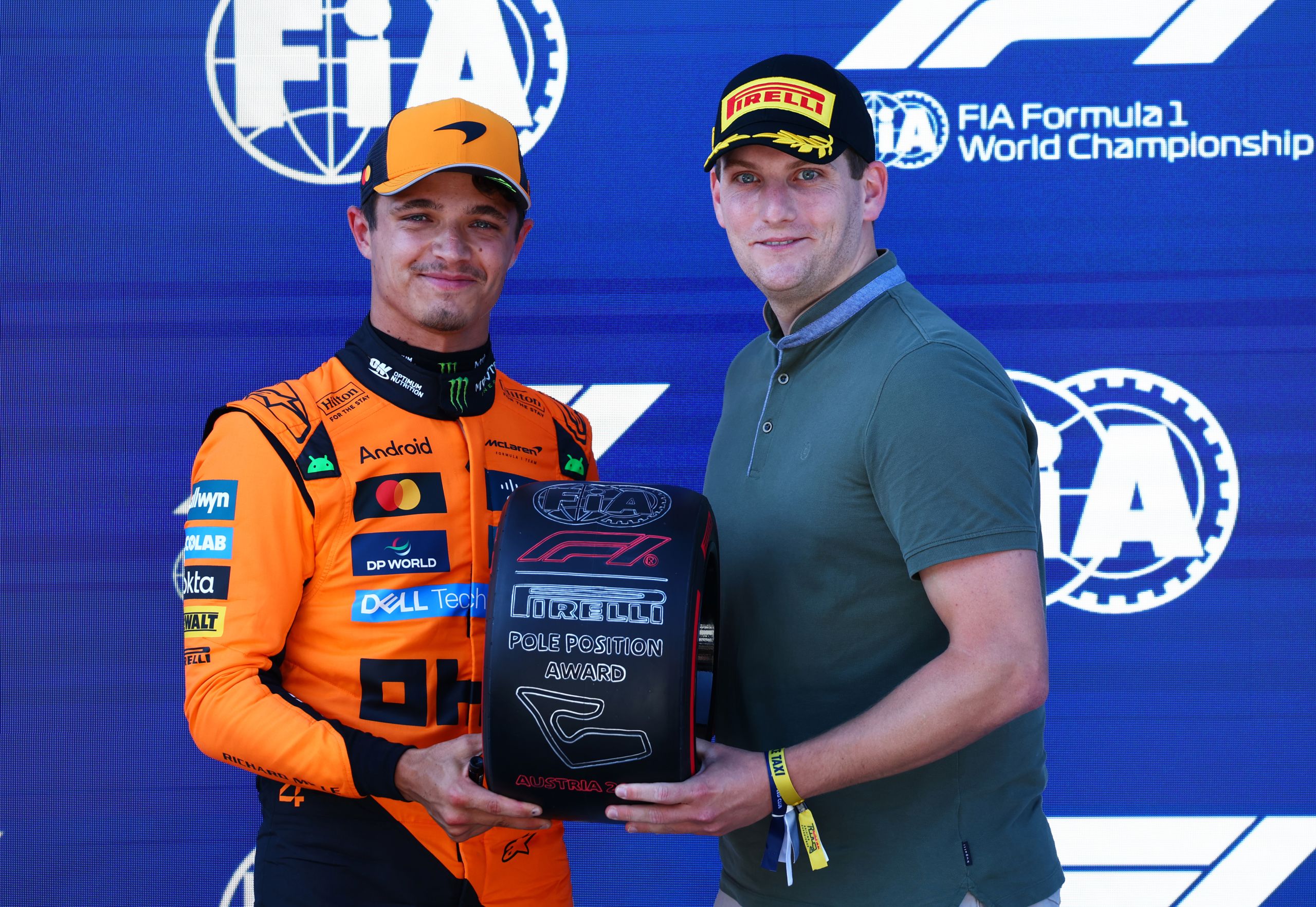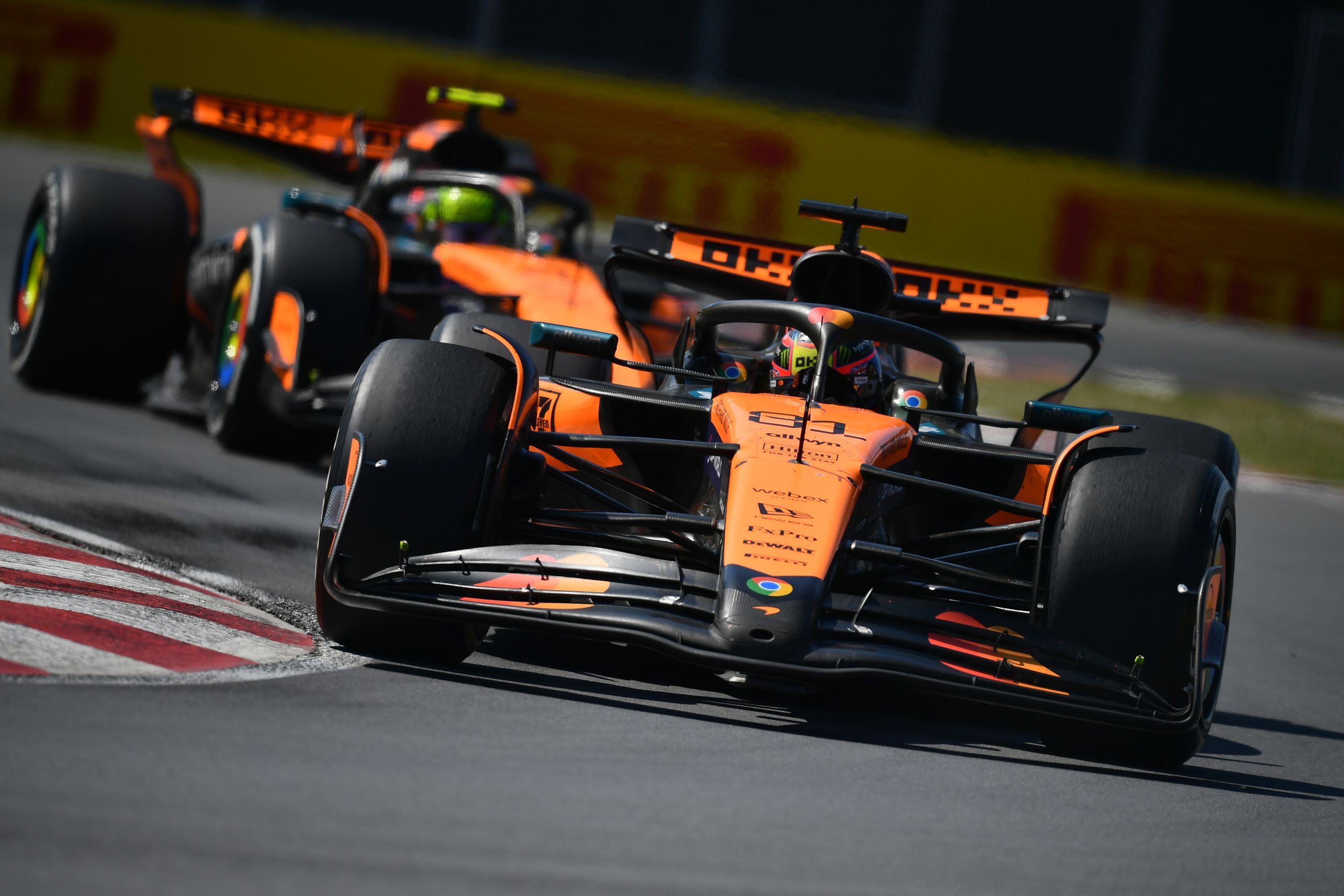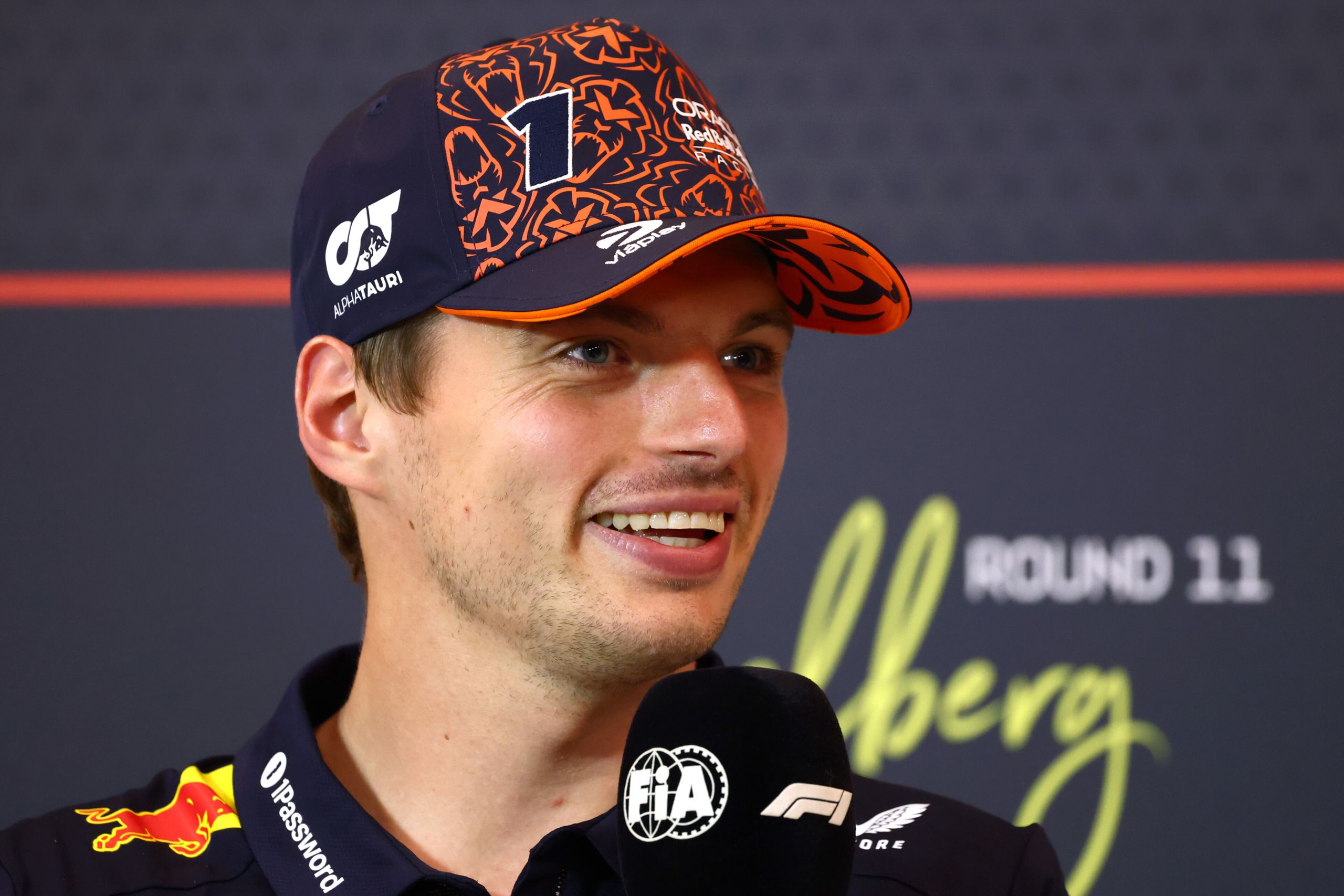How Formula 1 Suspension Works

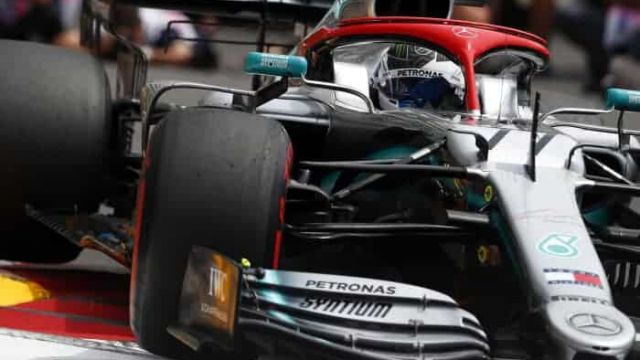
Have you ever wondered how Formula 1 suspension works? The suspension system of a Formula 1 car is a complex network of components, including springs, heave springs, torsion bars, anti-roll bars, dampers, pull rods, push rods, rockers, and sway bars. These components work together to control the movement of the car’s wheels and chassis, and to maintain optimal contact with the road surface. The suspension system also plays a crucial role in the car’s aerodynamics, helping to control pitch, roll, and cornering forces.
Understanding the principles of Formula 1 suspension is essential for any racing team that wants to compete at the highest level. A well-designed and properly tuned suspension system can mean the difference between victory and defeat on the track.
In this article, we will explore the key components of a Formula 1 suspension system, how they work together, and how they are adjusted to provide the best possible ride for the driver.
Suspension Components
Formula 1 suspension is a complex system that includes several components working together to provide the best possible handling and performance. The three main components of Formula 1 suspension are springs, dampers, and anti-roll bars.
Springs
The springs in a Formula 1 car are designed to absorb the bumps and vibrations that occur during a race, keeping the car’s wheels in contact with the track. There are two types of springs used in Formula 1 cars: heave springs and torsion bars.
Heave springs are used to control the car’s ride height, while torsion bars are used to control the car’s roll stiffness. Both types of springs are made of lightweight materials like titanium or carbon fiber to reduce weight and improve performance.
Dampers
Dampers, also known as shock absorbers, are used to control the movement of the springs and prevent the car from bouncing or oscillating. In Formula 1 cars, dampers are usually gas-filled and adjustable, allowing the driver to fine-tune the suspension for different track conditions.
The dampers work by converting the kinetic energy of the suspension into heat, which is then dissipated into the atmosphere. This helps to keep the suspension cool and prevent overheating, which can cause the car to lose grip and stability.
Anti-Roll Bars
Anti-roll bars, also known as sway bars, are used to control the car’s roll during cornering. They are usually made of lightweight materials like carbon fiber or titanium and are adjustable to allow the driver to fine-tune the suspension for different track conditions.
The anti-roll bars work by connecting the left and right wheels together, creating a torsion effect that resists the car’s tendency to roll during cornering. This helps to keep the car stable and improve its handling and performance.
Suspension Setup
Formula 1 suspension setup is a crucial part of the car’s performance on the track. It is designed to provide maximum mechanical grip and stability while minimizing pitch and roll. Here are some of the key components that make up the suspension setup:
Corner Weights
The corner weights of an F1 car are carefully balanced to ensure optimal handling and grip. The weight distribution is adjusted by adding or removing ballast weight to each corner of the car to achieve the desired balance.
Heave Springs
The heave springs are designed to control the car’s vertical movement (heave) and provide a comfortable ride for the driver. They are typically made of lightweight materials such as carbon fiber and are adjustable to fine-tune the suspension setup.
Push or Pull Rods
The push or pull rods are used to transfer the forces between the suspension and the chassis. They are typically made of titanium and are designed to be as lightweight as possible. The push or pull rods are also adjustable to fine-tune the suspension setup.
Rocker and Rollers
The rocker and rollers are used to convert the vertical movement of the heave springs into a horizontal movement that is transmitted to the push or pull rods. They are carefully designed to minimize friction and provide maximum efficiency.
Sway Bar
The sway bar is used to control the car’s roll during cornering. It is typically made of lightweight materials such as carbon fiber and is adjustable to fine-tune the suspension setup. The sway bar is also equipped with electronic sensors to provide real-time data to the team.
Suspension and Racing
When it comes to racing, suspension plays a critical role in ensuring that the driver has optimal control over the car. The suspension setup of a Formula One car is designed to provide the driver with the best possible mechanical grip and aerodynamics, while also minimizing tire wear.
Mechanical Grip
The primary function of F1 suspension is to maximize a tire’s contact patch with the road for optimal mechanical grip. This is achieved using push or pull rods and torsion bars that connect the suspension to the chassis. The heave springs and rockers are used to control the vertical movement of the car, while the pushrods and rockers control the pitch and roll of the car. The sway bar helps to keep the car level during cornering, which improves mechanical grip.
Aerodynamics
The suspension setup of an F1 car also plays a critical role in aerodynamics. The suspension components are designed to be as small and compact as possible to minimize drag. The electronic sensors in the suspension system allow the engineers to monitor the ride height and adjust it accordingly to optimize aerodynamics.
Tire Wear
The suspension setup of an F1 car must also be designed to minimize tire wear. The suspension must be able to absorb the bumps and vibrations of the track without transmitting them to the tires. This is important because excessive tire wear can lead to a loss of grip and a decrease in performance. The suspension must also be able to provide a comfortable ride for the driver, even though F1 cars are notoriously uncomfortable to drive.
Overall, the suspension setup of a Formula One car is a complex system that must balance several different principles to provide the driver with optimal control over the car. The suspension must be able to provide mechanical grip, improve aerodynamics, and minimize tire wear, all while providing a comfortable ride for the driver.
F1 Car Suspension Explained
What kind of suspension does Formula 1 use?
Formula 1 suspension systems are typically two types: push-rod and pull-rod, both of which use components such as dampers, springs, and anti-roll bars to control the movement of the wheels and chassis.
- Push-Rod Suspension: In this setup, the suspension rods push up on the bell cranks located within the bodywork, transferring the forces to the inboard springs and dampers. This configuration is more common in the front suspension of modern F1 cars.
- Pull-Rod Suspension: Conversely, with pull-rod suspension, the rods pull on the bell cranks. This design is often used for the rear suspension and is sometimes chosen for its aerodynamic benefits, as it allows for a lower mounting point that can help with airflow over the car.
Both systems aim to keep the tires in optimal contact with the track surface, manage tire load, and contribute to the overall aerodynamic performance of the car. The choice between push-rod and pull-rod suspension can depend on various factors, including the car’s design philosophy, aerodynamic considerations, and the handling characteristics desired by the team and drivers.
Do F1 cars have active suspension?
No, Formula 1 cars do not currently use active suspension. Active suspension systems, which automatically adjust the ride height and damping in response to changing conditions, were banned from Formula 1 in 1994 due to concerns over costs and the potential for significant competitive advantage. These systems were highly advanced for their time, with teams like Williams pioneering their use in the early 1990s. The ban was aimed at controlling costs and ensuring a level playing field, as well as keeping the focus on driver skill rather than technological dominance. Since then, F1 cars have used passive suspension systems that are manually adjusted by the team between sessions.
What is the purpose of suspension in F1?
The main purpose of the suspension is to connect a car to its wheels. This may sound relatively trivial; however, it does need a complex system of different components because moving a heavy object like a car at high speeds creates several challenges.
On a road car, the suspension has two main functions – ride and handling. Ride refers to the way the vehicle deals with changes in the surface of the road, how it copes with undulations, bumps, kerbs, potholes, changes in camber and the like.
The suspension makes sure the car can handle uneven surfaces; it dissipates the energy that is generated when travelling over undulations and ensures that the grip is spread correctly between the four tyres.
Handling, on the other hand, refers to the suspension’s role when it comes to vehicle dynamics and describes how the car reacts to the input of the driver – so, for example, how it behaves under braking or how it changes direction.
F1 suspension has the same two functions, albeit the parameters are different. Comfort, for example, is an important aspect of the ride quality in road cars; however, comfort is not exactly the main objective when designing and setting up an F1 car’s suspension.
Are there any functional differences between the suspension of F1 cars and road cars?
While ride and handling are functions of suspension systems on both F1 cars and road cars, there is a third purpose that’s unique to Formula One cars – or, more precisely, to racing cars that rely heavily on aerodynamics to generate downforce.
It’s something which engineers refer to as platform control.
The faster an F1 car goes, the more downforce it generates. When it’s travelling at high speeds it can generate an amount of downforce that is several times its body weight. Therefore the suspension has to deal with tonnes of extra load when the car is going fast.
This is not just a challenge in terms of the load the suspension must take, it is also a huge aerodynamic challenge. For the aerodynamic concept to work, the position of the car relative to the track is extremely important – raise or lower the car a few millimetres and the airflow changes dramatically, making important aerodynamic parts like the floor and the diffuser less effective.
An F1 suspension therefore must ensure that the pitch and ride height of the car are well controlled so that the aerodynamic concept can work to its full potential, despite the changes in downforce at different speeds. This is what platform control is all about.
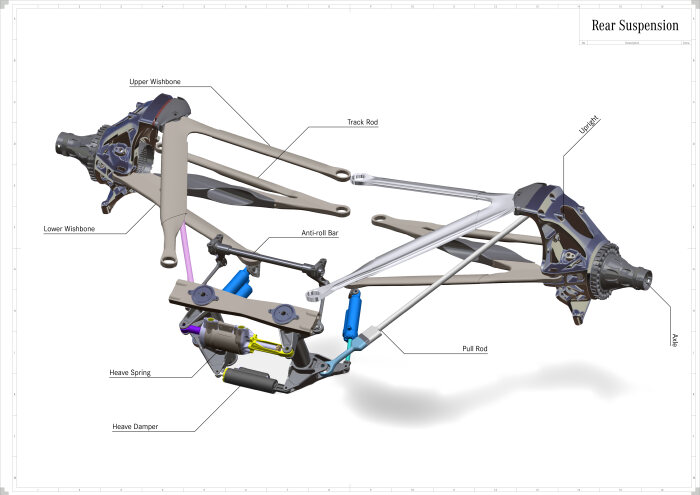
Mercedes-AMG F1 W10 EQ Power+ Rear Suspension
What are the different elements of F1 suspension?
The suspension elements on an F1 car are similar in concept to those on a road car, so all four corners of the car are sprung independently.
On a Formula One car, the suspension elements can be grouped into three sections – the inboard suspension, the outboard suspension and the elements that are in the airflow. Hidden away underneath the bodywork of an F1 car are the inboard elements of the suspension – springs, dampers, rockers and the anti-roll bars.
On the Mercedes-AMG F1 W10 EQ Power+ the springing is largely done pneumatically, so the car uses gas springs. The inboard suspension links to the elements that are in the airflow: wishbones, pull rods, push rods and track rods. Those elements connect to the outboard suspension, which is hidden away behind the wheels – the uprights, axles and bearings.
What is the biggest challenge when designing and building an F1 suspension?
A suspension must be able to take high loads. When an F1 car goes over a kerb at high speeds, the suspension needs to be strong and stiff to be able to handle those loads without occurring any damage.
Carbon fibre elements such as the push rods and pull rods, for example, are very strong in compression and tension and can take loads of ten Kilonewtons or more. At the same time, the suspension needs to be light – just like every other part on an F1 car.
Lastly, some suspension elements like the wishbones are out in the airflow, so those elements need to be relatively thin and skinny to reduce their aerodynamic penalty. To make things even more complicated, the wishbones must be big enough to house the tyre tethers – three for each wheel – which hold the upright and the tyre to the chassis in case of an accident.
Finding the right balance between these three requirements – high strength, low weight, and compactness – is a tricky balancing act and makes the design and manufacturing process of the suspension quite complicated.
How does an F1 team use the suspension to optimise the set-up of the car?
Optimising the suspension for each circuit is an important part of the general set-up work for an F1 car. Through the suspension set-up, the team can minutely control the way the tyre is presented to the road and optimise handling and grip levels by changing parameters like toe (the angle of the wheels relative to each other) and camber (the angle of the wheels relative to the road).
This kind of set-up work is largely done by changing the geometry of the suspension, so by changing metallic shims or by using suspension elements with different link lengths. The other area that the engineers will look at when working on the suspension set-up is platform control. In order to get the platform to work optimally, the team mostly focus on the spring rate and might change the gas pressure in the springs or replace metallic elements of different stiffness.
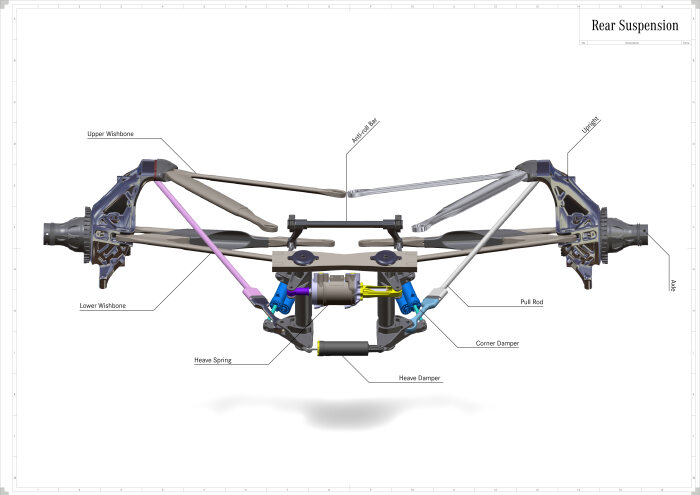
Mercedes-AMG F1 W10 EQ Power+ Rear Suspension
Do F1 teams change their suspensions over the course of the year?
Teams change their suspension over the course of the season for a number of reasons. Structural safety, for example, could be one of them.
Teams know exactly how much load their suspension can take; in fact, during every session, a structural system engineer will monitor the live telemetry to make sure the load limits are not exceeded. If there are any concerns about the structural safety, the team will change the suspension.
Another reason to introduce new suspension elements is upgrades to the car – either to the suspension itself or to its aerodynamic characteristics. Some components of the suspension like the wishbones or the steering arm are out in the airflow, so they have a big impact on the airflow around the car.
Finally, a team might introduce new suspension for a specific track. For the Monaco Grand Prix, for example, teams bring special front suspension to make sure the car could handle the unique challenges of the streets of Monte Carlo. Monaco features the tightest turn of the season, the famous Fairmont hairpin (aka Loews) which requires more steering lock than any other corner. Compared to the hairpin corner in the Canadian Grand Prix (Turn 10), an extra 40 percent of lock is needed for Loews hairpin.
The turn is so tight that the regular suspension would limit the choice of driving line through the hairpin or that the drivers would have to turn the steering wheel multiple times. The special front suspension the teams brought to Monaco allowed for a bigger road wheel angle, so that the drivers could attack the hairpin in the way they wanted.



